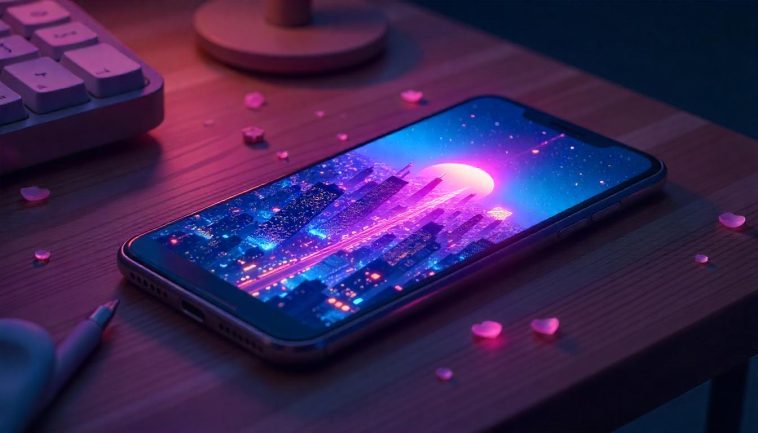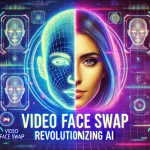The journey of AI image generation has been nothing short of meteoric. In just a few years, we’ve gone from blurry, abstract outputs to stunningly realistic and stylistically diverse visuals created from simple text prompts. We’ve compared platforms, learned to craft better prompts, seen real-world applications, and grappled with the ethical maze. But the pace of innovation isn’t slowing down.
So, what does the near future hold? Based on current research, emerging products, and expert predictions, here are seven key trends likely to define the next phase of AI image generation:
1. Leap Towards Hyper-Realism & Deeper Understanding
While current models are impressive, expect the push towards flawless photorealism to continue. This means mastering notoriously tricky elements like realistic human hands, complex textures, accurate reflections, and physically consistent lighting and shadows. Beyond just looking real, models will get significantly better at understanding complex prompts, accurately rendering intricate scenes with multiple interacting objects and precise relationships – capabilities hinted at by models like OpenAI’s GPT-4o image generation.
2. Granular Control & Intuitive Interaction
Text prompts are powerful, but the future lies in more nuanced control. We’ll likely see:
- Direct Manipulation: Interfaces allowing users to directly tweak elements within a generated image (e.g., moving objects, changing expressions) without needing complex prompts or external software.
- Enhanced Sketch-to-Image: More sophisticated tools for turning rough sketches or even mental concepts into detailed images.
- Standardized Fine-Grained Control: Features similar to Stable Diffusion’s ControlNet (dictating pose, depth, composition from reference images) becoming more common and user-friendly across platforms.
- Better Consistency: Improved methods for generating consistent characters, objects, or styles across multiple images – a major hurdle currently.
3. Real-Time & Interactive Generation
The wait time between prompt and image is shrinking. The trend is towards real-time generation, where visuals appear and evolve instantaneously as the user types, sketches, or adjusts parameters. Platforms like Krea AI are already showcasing this potential. This immediacy will transform AI image generation from a turn-based process into a fluid, interactive creative flow, enabling rapid experimentation and even live performance applications.
4. Deeper Workflow Integration & The Rise of AI Agents
AI image generation won’t just live in standalone apps. Expect deeper, seamless integration into the creative software professionals already use daily – think native AI features within Photoshop, Blender, Figma, Premiere Pro, etc., going beyond simple plugins. Furthermore, the concept of “AI Agents” – autonomous AI systems capable of handling complex tasks – is poised to enter creative workflows. Imagine an AI agent that takes a creative brief, generates multiple concept variations, adapts them based on feedback, and prepares assets for different formats, all with minimal human oversight.
5. Accelerated Multimodal Convergence
As explored previously, AI isn’t just generating pictures. The development of AI video, 3D model, and audio generation is accelerating. The major trend here is convergence. Increasingly powerful multimodal models (like GPT-4o, Google Gemini) can process and generate information across different formats (text, image, audio, video, code). In the future, a single prompt might generate not just an image, but a corresponding video clip, a basic 3D model of the subject, and appropriate background audio, streamlining cross-media content creation significantly.
6. Solidifying Ethical & Legal Frameworks
The Wild West days are likely numbered. Expect:
- Clearer Copyright Rulings: Ongoing lawsuits will likely lead to clearer legal precedents on the use of copyrighted data for training and the copyrightability of AI outputs (with the human authorship requirement expected to remain central).
- Increased Regulation: Governments globally are developing AI regulations (like the EU AI Act) that will likely mandate greater transparency, risk management, and potentially specific rules around deepfakes and data usage. State-level laws may proliferate first in places like the US.
- Wider Adoption of Provenance: Technologies like Content Credentials (based on the C2PA standard championed by the Content Authenticity Initiative) will become more widespread, allowing creators and consumers to verify the origin and edit history of digital media, including whether AI was used.
- Platform Responsibility: Increased pressure on AI platform developers to implement robust safety measures, mitigate bias, offer transparency, and provide clearer licensing terms.
7. Personalization & Specialization
One size won’t fit all. We’ll see a rise in:
- Niche Models: AI models specifically trained or fine-tuned for particular industries or styles (e.g., medical imaging analysis/generation, photorealistic architectural rendering, specific cartoon styles).
- Accessible Customization: Easier ways for businesses and even individuals to train or fine-tune models on their own datasets to achieve specific, consistent styles (e.g., matching a brand’s visual identity) – building on concepts like Adobe Firefly Custom Models or the custom LoRAs/checkpoints in the Stable Diffusion ecosystem. “AI-as-a-Service” platforms will likely facilitate this.
Conclusion: An Evolving Creative Partnership
The next few years promise AI photo generator tools that are dramatically more capable, controllable, integrated, and intelligent. They will likely move closer to being true creative partners, capable of understanding complex instructions, generating assets across multiple modalities, and even automating parts of the creative workflow.
However, this technological leap must be accompanied by careful ethical consideration and the development of robust legal and social frameworks. Balancing innovation with responsibility will be key. The future of visual creation is undeniably intertwined with AI, offering both unprecedented opportunities and complex challenges as this powerful technology continues its rapid evolution.



